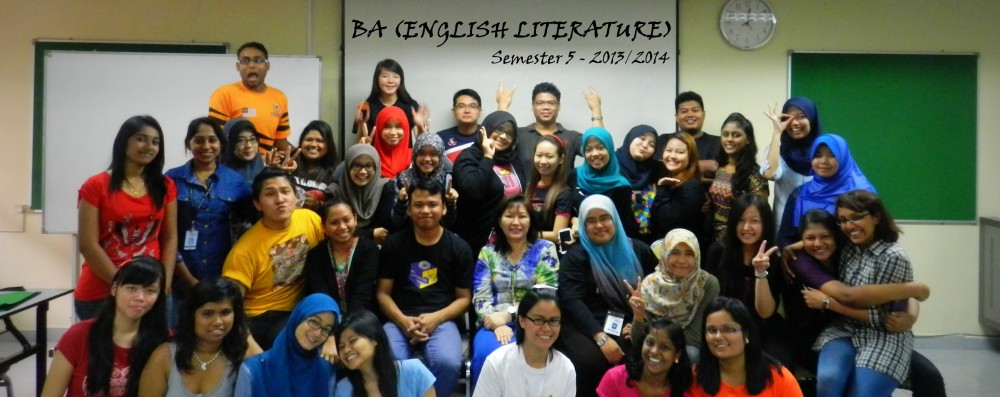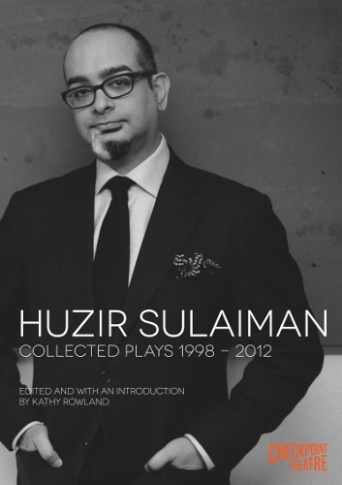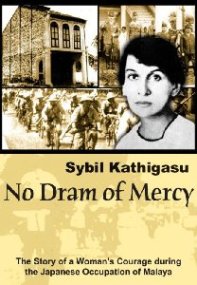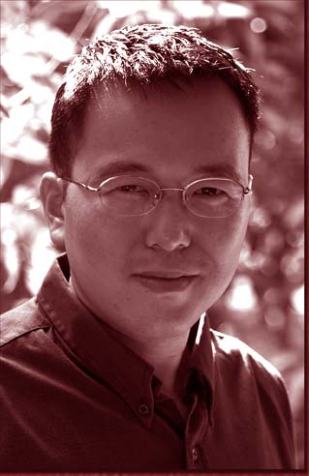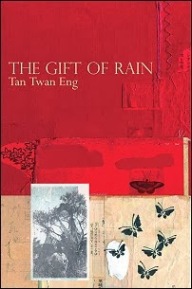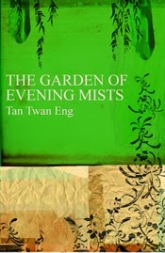Biography
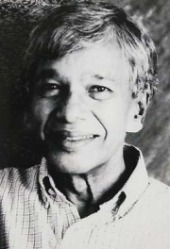
Lloyd Fernando was born to a Sinhalese family in Kandy, Sri Lanka in 1926. In 1938, his family migrated to Singapore. Mr. Fernando was educated at St Patrick’s in Singapore, with the Japanese occupation interrupting that education from 1943 to 1945. This early migration across the Indian Ocean had an enriching influence on Fernando, the writer and scholar, as it was to plant the seeds of a transcultural, diasporic imagination in him at an impressionable age. During the Japanese attack on Singapore, Mr. Fernando’s father was killed. During the Japanese occupation, Fernando worked in a variety of manual labour jobs.
Lloyd Fernando thereafter graduated from the University of Malaya in Singapore, and subsequently served as an instructor at the Singapore Polytechnic. Lloyd Fernando became an assistant lecturer at the University of Malaya in Kuala Lumpur in 1960. Mr. Fernando was awarded a scholarship at Leeds University, UK where he received his PhD. Lloyd converted his novel, Scorpion Orchid, into a play, which was first produced in Singapore in 1994. In the next year, 1995, the play had its premiere in Kuala Lumpur. It was first anthologised by the Singapore Institute of Management for the Open University in a collection of poems, short stories and plays by Singaporean and Malaysian writers, meant only for student consumption, and, therefore, was not for sale.
In 1967 Fernando was appointed to serve as a professor at the English Department of the University of Malaya, where he served until his retirement in 1978. Subsequently, Mr. Fernando studied law at City University in the United Kingdom and then at Middle Temple, returning to Malaysia with two law degrees, whereupon he was employed by a law firm, and thereafter started a separate law practice business. Fernando was admitted as Advocate and Solicitor of the High Court of Malaya in 1980, at the age of 54. In 1997, Mr. Fernando had a stroke and ceased his professional activities. The stroke was a pretty major one which happened in December of 1997, but in 1998, he was able to write an answer to a questionnaire by Daizal Samad who was a lecturer at the time at Universiti Kebangsaan Malaysia. Lloyd wrote some very interesting things about his work and his life for this particular piece, something he had never done before. In 1998, just a year after the stroke, he was able to write coherently, and he was, in fact, working on a third novel previous to that. But he just couldn’t pick up the threads of the story again. He tried very hard, but he just couldn’t do it. So, he has the first three chapters of it, but it’s hardly completed and he had to stop.
List of Works
- Scorpion Orchid, 1976
- Cultures in Conflict, 1986
- Green is the Colour, 1993
- Twenty-two Malaysian Stories: an anthology of writing in English (editor)
- “New Women” in the Late Victorian Novel, 1977
Source:
Scorpion Orchid (Summary)
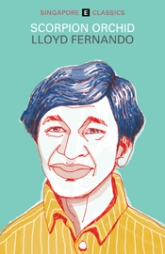
In Scorpion Orchid, Fernando uses the racial and political riots in Singapore in the early 60’to explore the demands on four youths (Sabran, Guan Eng, Santhinathan, D’Almeida), each of different race, as the face the challenges of a commitment to the forging of a new society which can be called home after the violence of the riots. Although a lot of hard work lies ahead, Fernando hints of the possibility of a genuine dialogue across racial lines so that commonalities rather than differences are emphasised and adaptations take precedence over puristic racial stands.
The four young men were united by the bonds of friendship, brought together in the uniquely multicultural society of Singapore. About to graduate from university, they are caught in the political upheavals of the 1950s. There are uncertain times: still recovering from the Japanese Occupation, Singapore is now ready to fight for Independence from the British. As they watch their countrymen confront each other, tearing the country apart, they face up to the reality of their multicultural society. Against a backdrop of violence and hatred, each embarks on an arduous journey of self-discovery, to reconcile deep-seated cultures and traditions with a new emerging society. In their quest for their true selves, the bonds of their young manhood are sorely tried.
The author’s vision of the flowering of a new, post colonial society (multi-lingual, multi-traditional) is crystallised in the image of the orchid of the novel’s title. Like this piece of orchid, the new society is a wonderfully adaptable hybrid created by a nationalistic, postcolonial generation out of the collective past. But its survival can be threatened by hidden venom. Scorpions lurk among the roots of the orchid waiting to sting and poison.
Written in a dynamic and evocative style, Scorpion Orchid takes us back to those tumultuous days in the early 50s when a nation was trying to assert its identity.
“Fernando’s text energizes [Lord] Jim’s story, providing the “other words” that Jim lacked, and thereby paving the way for a more optimistic prognosis for intercultural contacts.” – R. Kurtz in Conradiana
Cultures in Conflict: Essays on Literature & The English Language In South-East Esia
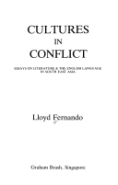
How do we adapt to the bicultural phase in human affairs in which we now live. Our world confronts us with conflicting life-styles, ethical criteria and notions of racial superiority. The last fifty years have confirmed this new dimension in the evolution of all cultures. These essays are explorations in a field which has remained obstinately difficult to define precisely. In discussing such authors as E.M. Forster, Joseph Conrad, James Joyce, Patrick White, Raja Rao, Han Suyin, Wong Phui Nam, and many others, the essays probe the disturbed personalities of those confronted by cultures in conflict.
Other essays explore the bilingual challenge presented by the English language, the threat posed to traditional forms of culture by the electronic media, and the emotional toll on the individual psyche adapting to change. This collection of essays provides provocative reading on such topics in the context of South East Asia, and is a pioneering work in a complex field where literature, culture, linguistics, philosophy, and social history intermingle.
The issues discussed are listed in the below:
- Open and Closed Cultures in Literature: A Note from the Third World towards the Re-Definition of Culture
- The Imperial Theme in British Fiction
- Conrad’s South East Asian Expatriates
- The Soul of Colonial Man
- Joyce and the Artist’s Quest for a Universal Language
- English, Literature and Bilingualism in South East Asia
- The Social Imagination and the Functions of Criticism in Asia
- Literary English in the South East Asian Tradition
- Sectional and National Literatures in a Multi-Cultural Context
- Picture of the Artist as a Eurasian
- Malaysian Short Stories of the Sixties
- Malaysian Short Stories of the Seventies
- New Drama in English in English
- Three South East Asian Comedies
- Standard English in Asia
- Sense and Science in English Language Teaching in South East Asia
- Literature and Language Teaching
- On Re-Defining the Self in South East Asia
- Source: Fernando, Lloyd. Cultures in Conflict: Essays on Literature & The English Language in South East Asia. Singapore: Graham Brash (Pte) Ltd. 1986. Print.
Green is the Colour (Summary)
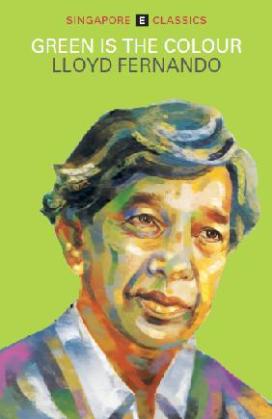
In Green is the Colour, fresh violence erupts in the racial riots in Malaysia (13th May, 1969). Again, a set of multi-racial characters is used to develop the novel’s ideas. Yun Ming, the Chinese who has been ‘absorbed’ into the system as a government official is beginning to question the dominant discourse, in particular, ideas on unity which the authorities are touting. Dahlan, once his university mate, and now a lawyer, looks with contempt on Yun Ming’s affiliation with the political powers. Dahlan himself tries to bait the conscience of the authorities by speaking out on the need for religious tolerance after the members of a Chinese religious sect and their leader Ti Shuang are arrested, not because of any crime they committed but because they appear to the authorities to be a threat to public security. Omar, the second important Malay character, fed up with what he deems the decadence of Western ways which have tarnished the race, seeks a return to the spiritual protection of a fundamentalist Islam. Important as these male characters are, it seems that Fernando gives prominence to the woman character, Siti Sara. A large portion of the last segment of the novel is told in her first-person narrative or seen through her consciousness.
When the novel opens, the violence engendered by the riots has not ceased. Roadblocks necessitate detours; tension is so high that it does not take much to ignite fresh eruptions. The country itself appears to have been divided into zones even as its multi-racial populace huddle into ‘safe’ spaces. Against such a scenario, we are not surprised that some of the main characters (Siti Sara, Dahlan) undergo the horrors of rape, incarceration and torture. But over and above this physical violence, is the more insidious violence that is done to men’s minds and their powers of clear and sincere expression. Language has been debased into counterfeit coinage in order to mask lies or purvey half-truths. As Dahlan sees it, “I have lived all my life by words. I have seen men make them do anything they wanted. That is the evil I have fought.”
No real connection between people can be possible when there is so much muddle and so little willingness to be clear. Fernando skilfully evokes an atmosphere of fear and suspicion in which many prefer to be listeners rather than risk voicing deeply-felt truths. These self-imposed silences are volubly filled by other voices such as that of Wan Nuruddin, the Secretary General in the Department of Unity, discoursing confidently on Confucian ethics and loyalty to the government. In the post May 13th ambience, an artificial togetherness has been created to prevent more painful soul-searching. Siti Sara admits that she developed and clung to the use of the plural personal pronoun because it stirred feelings of love for her fellow citizens whether Malay, Chinese, Indian, or Eurasian. In fact “she had embraced a specious feeling of togetherness with people in the abstract to cloak her unease, to disguise her semi-instinctive need not to know.” Like Yun Ming, she begins to see that official rhetoric merely covers the fact that racial lines are clearly drawn so as to reinforce a sense of ‘them’ and ‘us’. In this context, the shadowy figure of another woman, Neelambigai alias Fatimah binti Abdullah whose body neither her relatives nor the Religious Department would claim, haunts the reader as a sad reminder of intolerance and bigotry on all sides. Her family considers her an outsider because of her traversing of religious and racial barriers and the Religious Department will not accept her as being of the faith since there is no proof of conversion. Dahlan himself discovers that it is not so easy to simply say, “I don’t care for your beliefs, I will bury her.”
The individual in such a society is constantly under surveillance. Nearly all the main characters have a sense of being watched. The leitmotif of eyes is skilfully manipulated to reinforce an Orwellian sense that one’s every move is known, noted and filed away for future reference. Panglima, Political Secretary to the Minister, whose basilisk stare unsettles even as it mesmerises, has files on everyone. Such an atmosphere breeds paranoia, even madness. The more sensitive members of the society chafe against the tension and strain of having to choose one’s words before speaking. Dahlan, we learn, had already had a nervous breakdown while still an undergraduate. Siti Sara, the returnee from an American university, who now lectures in a local institution of higher learning, feels as if she is under the close scrutiny of colleagues, students, and even her own husband, Omar who wants her to quit her job, follow her to Tok Guru Bahaudin’s community in Jerangau. That her internal turmoil threatens to spill over is conveyed in various instances. Looking at a flower in the compound of her kampung home to which she has returned to seek some respite. She feels as if “the hibiscus exploded in her field of vision… One flower glowed so intensely bright that it seemed a flame and she gazed at it thunderstruck. She stood before a molten furnace door… It was inexpressibly wonderful to the point of being terrifying and she steered away from the disquieting splendour, fearing madness.”
The novel’s many scenes of violent sexual encounters, for example, between Yun Ming and Sara, and Sara and her husband showed the desperate coming together of people whose inner lives are intensely disturbed. Yun Ming’s violent possession of Sara is like an urgent effort to transcend loneliness and the consciousness that one has been a pawn in the political games of the powers that be. Omar takes Siti Sara with unseeing eyes in a narcissistic frenzy. A refusal to see other points of view propels him towards the confined space of Tok Guru Bahaudin’s domain where one can be away from tarnishing contact with Western ways and those not of the faith. He does not see that to do so is to deny his dream, both colonial and migrant. It is a retreat into an unreal world, a space that assails Siti Sara, who follows him half-heartedly to Jerangau, with its dissolution and its retrogressive, almost primeval atmosphere.
Other reviewers have found the ending of the novel optimistic. Yun Ming resigns his post, is ostensibly his own man at last, and he and Siti Sara come together to forge a new destiny. But the Kafkaesque quality of the last portion of the novel where Siti Sara is the center of consciousness fuses the quotidian and nightmarish, and suggests that all is not well. To Siti Sara, the watches in the form of Tzeto, Vanar are terrifyingly present still. The only safe place is the “little room in her head.” Without dismissing the physical scars of her ravage body, it is the wounds inflicted on her nerves that reinforce our sense of the power of the penaungs and dalangs (puppet-masters).
Are there, therefore, no glimpses of hope? Fernando records simple acts of kindness between people of different races in a meal shared or a fruit given at a market place. In pockets of rural seclusion, which have miraculously escaped political manipulation, families live side by side “their bonds strong as they are unspoken.” The novel is not only peopled by grosteque figures of nightmare such as Panglima, Lahab and Tzeto; others such as the simple, warm-hearted Safiah and Lebai Hanafiah, Siti Sara’s father, renew our belief in the decency of common people. Although, as Orwell says, this decency is seldom brought into the corridors of power, that it is still there is reassuring. The Lebai, on his deathbed, gives his blessing to Siti Sara’s conjoining with Yun Ming: “I tell my beloved child there is nothing to forgive, only love to be given.” Accepting the legacy of a multi-racial history, the Lebai will not allow zealous groups “to come between me and love for all humanity.” And the land too, in spite of the scars it bears of trees felled and hills levelled for sundry development projects, is still able to renew itself in fresh, green vegetation.
Green is the Colour is clearly conceived as a novel of ideas and this is the source of its weakness and strength. The author has to deal with a range of characters of different races without privileging any one except perhaps, Siti Sara who is given more attention. He does not stay long enough with any one character for us to know that character well. Although his characters are memorable collectively, no one individual arrests our attention. The strength of the novel is its uncompromising look at the past and its legacies for the present. It articulates with keen insight some deeply-felt but unexpressed truths about the way we see each other in this multi-racial land. When so much rhetoric is today directed toward the future, it is timely that a work invites us to pause and ask what has been and what is.
(First published in: The Pen is Mightier than the Sword, Skoob Pacifica Anthology No. 2, Skoob Books Publishing Ltd. 1994).
- Source: Fernando, Lloyd. Green is the Colour. Kuala Lumpur: Silverfish Books. 2004. Print.
